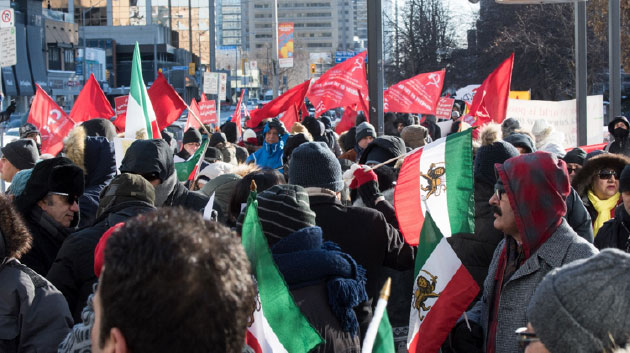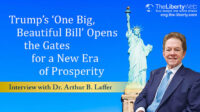The Reason Behind The Iran Anti-Government Protests
What Kind of Democracy Do Iranians Seek?
Anti-government protests began in Iran in late December 2017, which spread rapidly throughout the state. So far over 20 people have been killed and hundreds were arrested. The government deployed the Revolutionary Guards to quell the situation, but it has yet to put the minds of the Iranian people at rest. What are the Iranians demanding, and what is their ideal form of government?
This article will pick up on their voices to look at the ‘tectonic movement’ now happening in the Middle Eastern superpower.
On 28 December 2017, the people of Iran went out onto the streets in protest against the government. It was triggered by the current president of Iran, Hassan Rouhani, and his economic policy. The people were frustrated by the high unemployment rate and inflation, which were causing price increases for food and daily goods.
Per the IMF, Iran’s unemployment rate in 2017 was 12.4%. The unemployment rate amongst youth was over 20%. Even those who had university degrees were lucky if they found part-time jobs, but they still had to juggle 2 or 3 different jobs to earn a living.
On the other hand, the military, the Revolutionary Guard and hard-line conservative clergymen are being well treated and paid. The military budget was raised by 20% compared to 2016 (now approx. USD11 billion), and the budget for religious organizations managed by hard-line conservative clergymen was 8 times greater than it was 10 years ago.
The people were infuriated by the corrupt economic policy that left them starving while the military and clergy were guaranteed plenty.
Some Demand The Grand Ayatollah To Stepdown
In the Islamic Republic of Iran, there is a Grand Ayatollah who serves as the highest authority above the President and Parliament. In other words, the supreme leader of Iran is not president Rouhani, it is Sayyid Ali Hosseini Khamenei.
The Grand Ayatollah is chosen by the Assembly of Experts, whose membership is elected by the people. The Grand Ayatollah holds the final legislative authority and the right to declare war: he is the absolute leader of Iran.
In Iran, there is a conflict between the conservatives who want to protect the ancient Islamic system with Sayyid Khamanei at its centre, and the reformists who want to modernize and liberalize the Islamic system. The recent protests started with the economic problem, spread like wildfire throughout the country, and gradually turned into a demand for the stepdown of Sayyid Khamanei.
This move of openly criticizing the Grand Ayatollah is extremely rare in a country where conservative security forces such as the Revolutionary Guard keep constant surveillance over the people.
Corrupt Politics and the Unhappy People
We interviewed a young Iranian man who immigrated to Japan last year on the reason why people began to criticize the government.
“Some of the people feel that the country is rule by religious leaders,” he said. “Iran is a country with bountiful natural resources, but Sayyid Khamanei and the powerful leaders are given special treatment, and politicians are doing dirty things for their own selfish cravings. The people are unable to receive the benefits of those resources”.
Another man from Tehran said, “Iran has recently experienced huge earthquakes and shortages. Many people think that God is angry at the corrupt Grand Ayatollah”.
What Is Their Ideal Democracy?
“The entire world understands that the good people of Iran want change,” Trump tweeted in December last year on the protests. “Oppressive regimes cannot endure forever, and the day will come when the Iranian people will face a choice”.
There are many Iranians critical of Trump’s EO to prohibit the entrance in to the U.S. of people from 7 Islamic countries. At the same time, some of the people critical of the Iranian government support Trump’s idea of wanting a change in the Iranian political system.
Some of the protesters were shouting, “No more Islamic republic! Iran for democracy!” Do these people desire a democracy like the U.S.?
“Those amongst the protesters who demand democracy are a minority,” explained an Iranian man living in Japan. “The majority of Iranians seek politics with Islamic values at its foundation where freedom and democracy are guaranteed”.
Innovation Necessary for Islamic Nations
The protests made clear that the people of Iran are unhappy about the current political system.
Master Ryuho Okawa, founder and CEO of Happy Science, discussed the problems inherent in monotheistic Islamic countries in his book “The Laws of Faith”.
“Some Muslims acknowledge democracy, but those so-called ‘fundamentalists’ don’t. They think that people should live exactly as God desires of them. The problem, however, is this: the current Islamic leaders cannot hear God’s voice.”
“If they could hear God’s voice, they would reflect on themselves and change their thoughts’ but they can only hear God’s voice in the very old texts from ancient times. Those old words do not tell us how to make political and economic decisions in our current age, because none of that is written there.”
Islamic countries need to unify the teachings handed down from the prophets and modern-day principles. There are, however, historical and religious grudges between the Islamic countries and the Christian countries of the West, such as the U.S. In other words, there is a possibility that countries like Iran will not accept the Western ways.
Japan is a superpower that has no ill feelings in its history or religion with the Middle East. There is, therefore, a high chance of success in gaining the trust of the people of Iran. Japan must show the values necessary for national prosperity, and a political vision consistent with Islamic ideals that can both unite and make the people happy.



















